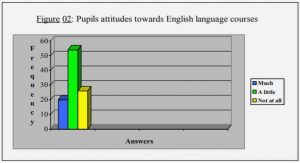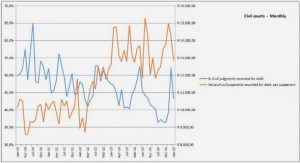Get Complete Project Material File(s) Now! »
Transport phenomenology in quantum dots
A quantum dot (QD) is a zero-dimensional system, which has discrete energy levels. The energy levels of a quantum dot can be filled with electrons very much like an atom [73], which explains why quantum dots are sometimes referred to as artificial atoms. Transport measurement is a way to perform the quantum dot spectroscopy since the 90’s. The quantum dot is contacted to reservoirs, with which it can exchange electrons, and it is capacitively coupled to one or more gate electrodes, which vary the dot electrostatic potential (figure 1.1). Along with the extrinsic energy scale kBT imposed by temperature, three intrinsic energy scales mainly characterise electronic transport through QDs.
”Closed” quantum dots
”Closed” quantum dots have low tunnelling rates to reservoirs, which means that they are nearly isolated from the leads. Coulomb blockade physics dominates : the dot state is essentially defined by the number of charges. Charge stability diagram for single and double QD are explained in 1.2.1.1 and 1.2.2.1. In nearly isolated dots1, transport is described by the master equation approach (1.2.1.2). As electron dwell time in dots is rather long (0.05ms ∼ 20kHz in [74]), charge is a good quantum number.
This is exploited to make charge qubits in double QDs (1.2.2.2). Because of its higher robustness to decoherence, the electron spin degree of freedom is at the core of many qubits proposals as illustrated in 1.2.2.3.
Coulomb diamonds
On an isolated island the number of charge must be an integer because of charge quantisation. A quantum dot contacted to reservoirs remains a Coulomb blockade system where the charge number is well defined, provided that it is ”isolated enough”. More precisely the energy fluctuations must be much lower than the charging energy : max(, kBT) ≪ U. In this case electron transport through the dot is blocked except if the addition energy is supplied by an external voltage source. Conductance map in the Vg-VSD plane shows Coulomb diamonds, where the charge number on the dot is fixed (no transport). Each diamond corresponds to the N-electron ground state. Boundaries of N-electron diamond can be found using the constant interaction model. It is based on
the two following assumptions. Electronic interactions inside the dot and between dot and its environment are constant and parametrized by the total capacitance of the dot : C = Cg + CL + CR where Cg is the dot capacitance to the gate and CL/CR the dot capacitance to the left/right lead. Effects of interactions on the ”chemical” energy-level spectrum are neglected, and the single-particle energy-level spectrum (the set of {ǫi}) holds, whatever the electron number. In this framework, the total energy of the dot with N electrons in the ground state is : E(N) = Eel(N) + XN i=1 ǫi.
Master equation for transport : ≪ kBT
Consider a QD in the Coulomb blockade regime, with the additional condition ≪ kBT. In this case single-electron tunnelling events are sequential and random. This is why a probabilistic approach to describe transport is appropriate [75]. The system is described by probabilities pα(t) to be in the state α at time t and tunnelling rates ˜ α→β/~ giving the probability per unit time for the system to go from α to β. The master equation is a balance equation for the probabilities. In the most general case it writes : ~ dpα dt = − X β ˜ α→β pα + X β ˜ β→α pβ (1.9).
In the most simple case of non-degenerate levels, transport at the N-N+1 ground states degeneracy is ruled by the probabilities p0 and p1 for the last level to be empty or occupied. In this single level picture, the energy ǫN+1 of the last level is further labelled ǫd. Transport from (to) the lead i ∈ L,R to (from) the dot happens at a rate ˜ +i (˜ −i ). The total ingoing and outgoing rates are (in energy units) ˜ ± = ˜ ±L + ˜ ±R . Counting incoming and outgoing electrons gives the following master equations : ~ dp0 dt = −˜ + p0 + ˜ − p1.
Double quantum dots as qubits
The simplest qubit is a two-level system. Examples of natural two-level systems are spins 1 2 (up and down states) and diatomic molecules (bonding and anti-bonding states). These can be realised artificially in quantum dot devices : single electron spins in single quantum dots and double quantum dots.
Charge qubit
Close to zero-detuning, B and AB states form a two-level system, that can be used as a qubit. The anti-crossing control parameter is the detuning ǫδ. The qubit frequency is given by ~ = q ǫ2 δ + 4t2. Preparing, manipulating and detecting the qubit state are the elementary operations required by quantum information processing. This was first achieved in 2003 [76] in GaAs 2DEG applying DC voltage pulses on the drain electrode and measuring current. The qubit coherence time T2 ∼ ns given in this experiment remained of the same order of magnitude in following works in GaAs 2DEG ([77], [78]) as well as in Si [79] and carbon nanotube [52]. Although experiments differ from their qubit operation schemes and host material, charge noise is the shared limiting decoherence process. Charge noise is due to local charge hopping between potential minima created by defects. It causes fluctuations in gate potentials, thus in detuning and qubit frequency. The amplitude of the corresponding 1/f noise density is estimated to be few 10−4e/√Hz with little variations between host materials.
Singlet-triplet spin qubit
Poor coherence properties of charge qubits foster research on qubits exploiting the electron spin degree of freedom. Single spin 1 2 qubit, singlet-triplet qubit in double QD, exchange-only qubit with 3 electron spins are well established spin qubit architectures.
Other proposals like spin-orbit or valley-spin qubits combine spin with other degrees of freedom. In the prospect of quantum information processing, current research issues in the field include operation fidelity, coherence properties, error correction, up-scaling. The purpose of this section is not to make a review on spin qubits, but to give an insight into this major topic of QDs by focusing on the singlet-triplet qubit. This particular choice provides the opportunity to introduce key concepts ruling spin physics in double dots.
Kondo resonance conductance and universality
The Kondo problem reveals two main properties of the Kondo effect. Firstly conductance is high, though inside a Coulomb blocked region. Despite its finite value predicted by more evolved theoretical models, the conductance at T < TK remains greatly enhanced, and can reach the value for a perfected transmitted channel 2e2 h [86]. The low-energy divergence condition also requires eVSD < kBTK. The Kondo resonance thus manifests itself by a zero-bias line inside a Coulomb diamond in the Vg − VSD conductance map.
This is the characteristic Kondo ridge. Secondly the emergence of a single energy scale characterizing the divergence suggests scaling laws involving TK. This makes the success of the renormalization group theory. All physical quantities are universal functions of dimensionless parameters, kBTK being the scaling energy. Conductance and current noise spectral density are functions of T TK , eVSD kBTK , gμBB kBTK . Conductance versus bias voltage exhibits a peak of width ∼ TK. Measurements for several samples with different TK collapse on a single function as illustrated on figure 1.7.
Synthesis of non-classical states by SIS junctions
Other mesoscopic circuits like Josephson junctions or normal metal junctions can be coupled to microwave resonators. These latter are usually described as an electromagnetic environment, in which energy can be dissipated, when inelastic tunnelling occurs in the junction. If a SIS junction is DC biased with |eVSD| < 2, Cooper pair tunnelling is blocked, unless one or several photons absorb the bias energy. Two-photon processes have been measured [45] and are predicted to produce entangled photon pairs [110] and bunching statistics [111]. Under certain conditions single-photon-assisted tunnelling is also expected to create photonic non-classical states like antibunched photons [112]. All these features are looked for experimentally. The backaction of non-classical light states on mesocopic conductors is also investigated [113].
Linear response of circuit to microwave field
The purpose of this section is to describe how the cavity transmission changes in presence of a quantum dot circuit, which responses linearly to the microwave field. As the circuit charge susceptibility will enter the modified formula, high-finesse cavities are a powerful probe to investigate charge dynamics as will be shown in chapter 5.
Cavity transmission in the circuit linear response regime
We consider a coupling scheme where each QD circuit energy level i is modulated by the cavity field with the coupling strength gi given by 2.16. There is no modulation of the lead electrochemical potentials. Modulations of tunnel couplings (γ terms of section 2.2.2) are disregarded. In such a situation the dot-cavity coupling hamiltonian given by 2.15 simplifies as : He−ph = X i ~giˆni(ba + ba†) (2.21).
The input-output formalism presented for a bare cavity in section 2.2.1 can be adapted in presence of a quantum dot circuit by replacing Hcav in equation 2.3 with Hsyst = Hcav+ He−ph+Hdot. Hdot describes the bare QD circuit and commutes with ba. Here we consider a monochromatic driving term, which is sufficiently large for quantum fluctuations to be negligible (photon number n & 10). It is convenient to write this classical drive explicitly in the total hamiltonian : H = Hcav + | Hbath +{zHc,bath + Hdriv}e Hd cav +He−ph + Hdot.
Table of contents :
Abstract
Acknowledgements
Acronyms and notations
Introduction
1 Quantum transport in quantum dot circuits
1.1 Transport phenomenology in quantum dots
1.1.1 Energy scales
1.1.2 Transport regimes
1.2 ”Closed” quantum dots
1.2.1 Coulomb blockade
1.2.2 Double quantum dots as qubits
1.3 Kondo physics
1.3.1 From Anderson model to Kondo physics
1.3.2 Kondo resonance conductance and universality
1.4 Quantum dot circuits with superconducting contacts
1.4.1 Proximity effect in a quantum dot
1.4.2 Cooper pair splitter
2 cQED architecture as a probe of dynamics of mesoscopic systems
2.1 Microwave response of mesoscopic circuits
2.1.1 Universal charge relaxation
2.1.2 Dynamics of Kondo physics
2.1.3 ABS spectroscopy
2.2 Mesoscopic circuit QED
2.2.1 Cavity description : Input-output theory
2.2.2 Different coupling schemes to the cavity electromagnetic field
2.2.3 Dissipationless description of a superconducting qubit-cavity system
2.2.4 Mesoscopic circuit QED experiments
2.3 Linear response of circuit to microwave field
2.3.1 Cavity transmission in the circuit linear response regime
2.3.2 Adiabatic limit
2.4 Master equation treatment of coherent coupling between cavity and circuit electronic transitions
2.4.1 Isolated two-level system
2.4.2 Case of a three-level system in a ladder geometry
3 Experimental methods
3.1 Nanofabrication
3.1.1 Sample description and outlook of the fabrication process
3.1.2 Sample cleaning
3.1.3 Patterning of gold alignment crosses, contacting pads and sample number
3.1.4 Niobium coplanar wave-guide resonator and circuit bonding pads and precontacts
3.1.5 Carbon nanotube stamping
3.1.6 Patterning of the device electrodes
3.1.7 Sample mounting and wire-bonding
3.2 Measurement setup
3.2.1 Cryogenics
3.2.2 DC measurements
3.2.3 Microwave measurements
4 Dynamics of Kondo effect at finite frequency
4.1 Predictions and existing measurements on Kondo dynamics
4.2 Kondo phenomenology
4.2.1 Sample
4.2.2 Resonance in absence of excitation
4.2.3 Phenomenology under microwave excitation
4.3 Power-frequency dependance of Kondo conductance peak under microwave excitation
4.3.1 In situ microwave amplitude calibration
4.3.2 Scaled amplitude-frequency conductance map
4.3.3 Ansatz proposed for quantitative analysis
4.4 Test of universality
5 Charge dynamics of a single level coupled to fermionic reservoirs
5.1 An S-QD-N device embedded in a microwave resonator
5.2 Equilibrium charge dynamics in a N-dot junction at finite frequency
5.2.1 Cavity signals as a probe of charge susceptibility
5.2.2 Investigation of charge relaxation universality
5.3 Non equilibrium charge dynamics in an S-dot-N bijunction
5.3.1 Crossed measurement of dot conductance and cavity response
5.3.2 Photon-assisted tunnelling between a dot and a superconductor .
5.4 Summary and discussion
6 Strong coupling of a Cooper pair splitter to cavity photons
6.1 Sample and setup
6.2 DC transport
6.3 Cavity response
6.3.1 Resonant behaviour
6.3.2 Strong coupling
6.4 Preliminary microscopic interpretation
6.4.1 Three-level ladder scenario
6.4.2 Sub-gap transitions
Conclusion and perspectives
A QD-S and splitter effective hamiltonian
A.1 Schrieffer-Wolff transformation
A.2 S-QD device
A.3 Cooper pair splitter
B Nanofabrication processes
B.1 CPSRES fabrication roadmap
B.2 Quartz stamps with CNT fabrication
B.3 Nb cavity fabrication
B.4 CNT stamping
C Photon number evaluation
C.1 Input power Pin calibration
C.2 Output power Pout calibration
C.3 Photon number
D Supplementary materials on AC Kondo
D.1 Raw data description
D.2 Power calibration and frequency set
D.3 Data extraction and scaling
E Supplementary materials on charge relaxation
E.1 Experimental supplementary
E.2 Theoretical supplementary
Bibliography






